A week of trekking around Nisyros. So much to see. So many familiar places to revisit. Such a warm welcome from so many people.
What impressed us first when we arrived on a day trip from Tilos in 2001, and continues to impress, is the 3-kilometre-long caldera and its craters. The eastern end, towards the caldera-rim village of Emborios, is an open woodland of oak and turpentine (Pistacea terebinthus) trees, riven by a fissure from seismic activity in 2003, roamed by goats, turkeys and feral pigs. The western end is a dustbowl with a series of sulphur-venting craters. Half-expect the Pale Rider to emerge from the shimmering heat, but more likely to see a lanky Welshman trudging along.




Returning from the crater on the bus on that first trip, we were let loose on the town to spend our hard-earned in the shops and tavernas of Mandraki. Instead, we somehow found our way a short walk from the town up to the Paleocastro, the second WOW factor in a couple of hours. As with the caldera and craters, I revisit every time I’m back on the island. This time, once again, there were new things to see as well as be gob-smacked by the sheer size of the blocks in the stone walls.



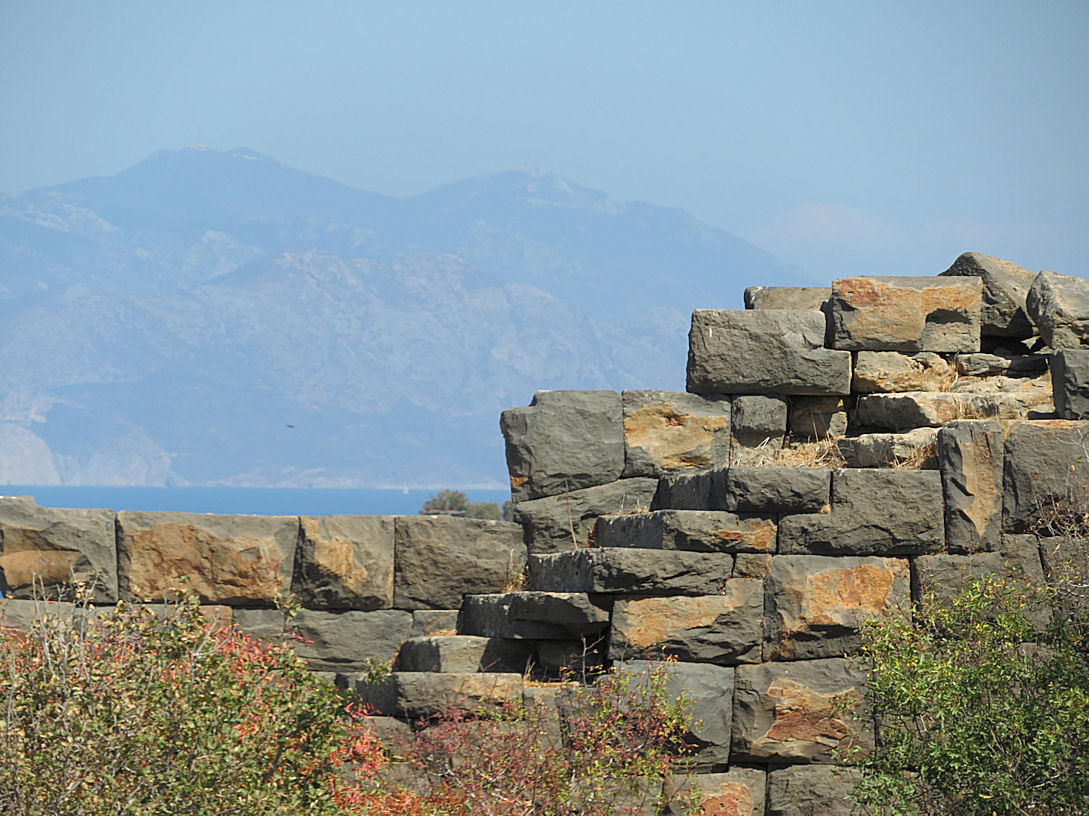

But the historical interest is far from being just the immense structure of the Paleocasto. Though the chapel is locked, the small, walled monastery complex of Armas has three cave chambers used for storage with amphorae still in place.



The even smaller walled monastery of Siones, is even more interesting. I had heard reports that it was being turned into a private house with the frescos in the chapel painted-over. Given what happened to the remnants of the castle at Emborios, I found that thought depressing. But not so. The work which has been done has been to protect what is a valuable historical monument. Still open to those wanting to go inside, but with properly fitting doors and bolts to keep out the goats, nothing has been lost. The roof of the chapel has been repaired to protect further damage to the frescos and all that has been painted over is the wall below them. The original cave dwelling and the other rooms built on later are all intact and repaired. Very encouraging to see.
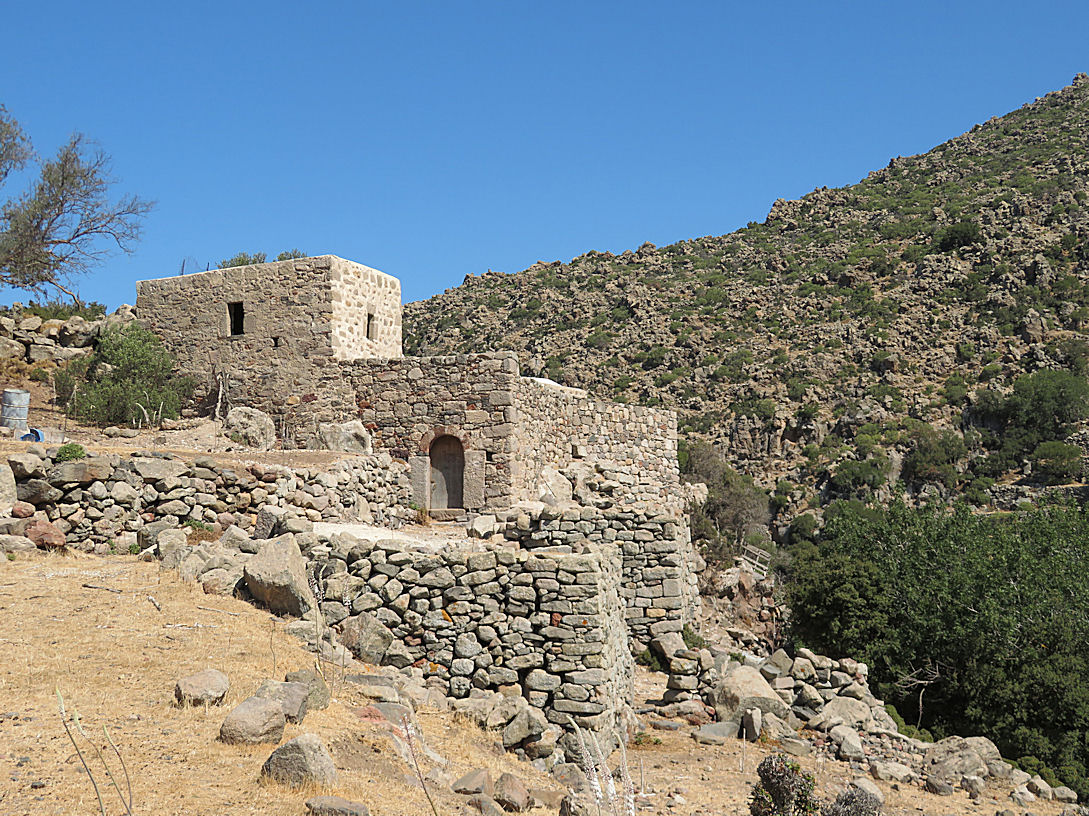
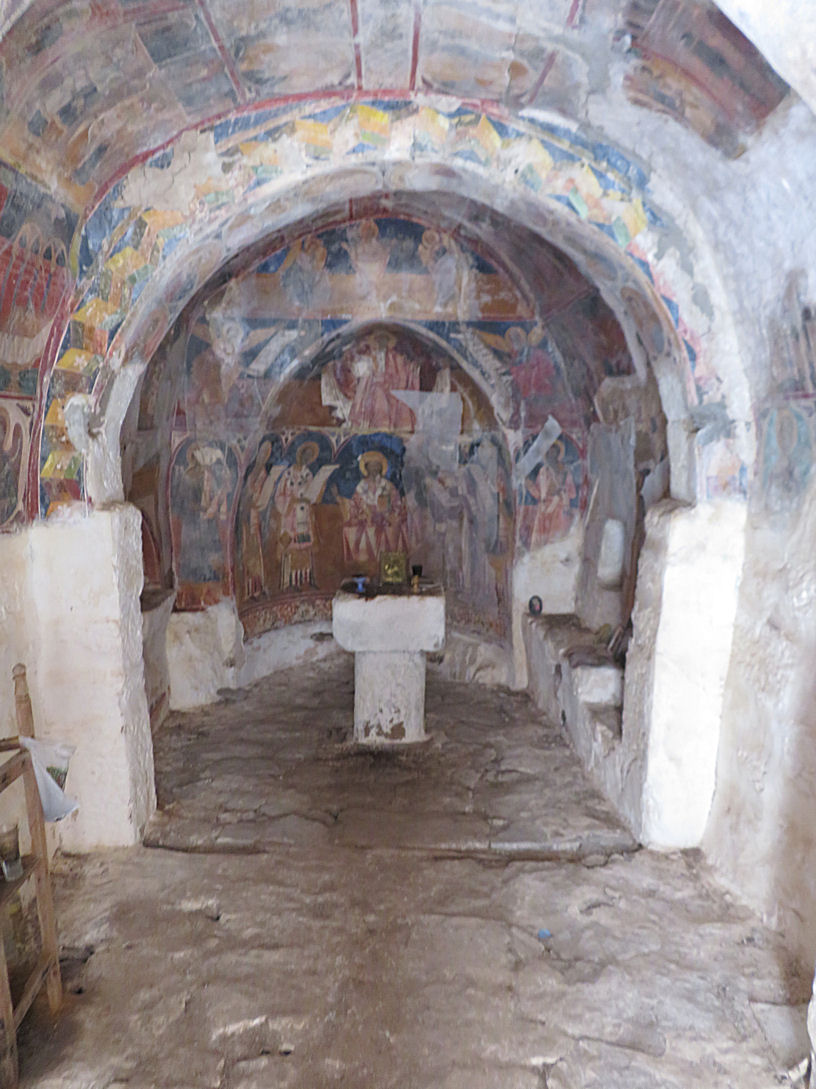




Another fascinating place is the high-level hidden ‘valley’, really a caldera, of Nifios. With settlement history dating back to Dorian times, there is much evidence of antiquity. The ‘Horns of Consecration’ and the cave below. A complex of linked stone houses and a church built into the rocky crags. Nibs for roof timbers in a crag. Underground chamber with a central stone pillar used as a chapel. Terraced fields stretching up the mountainside. …….Frescos


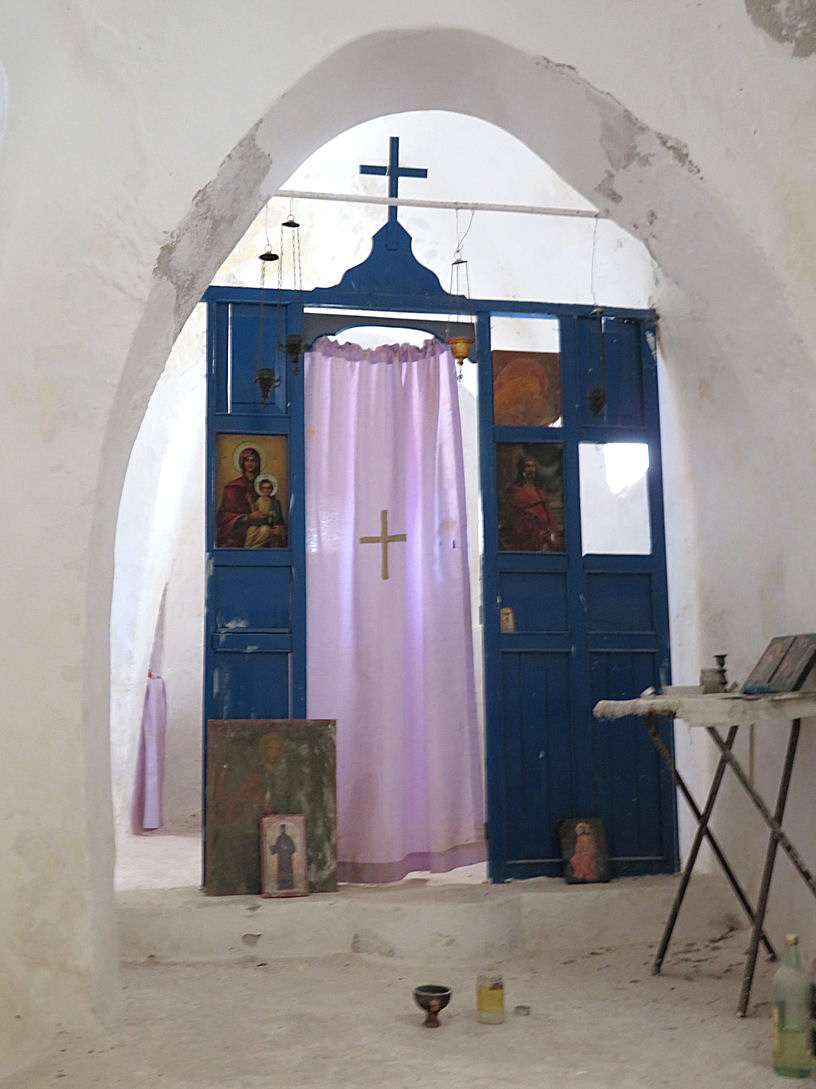

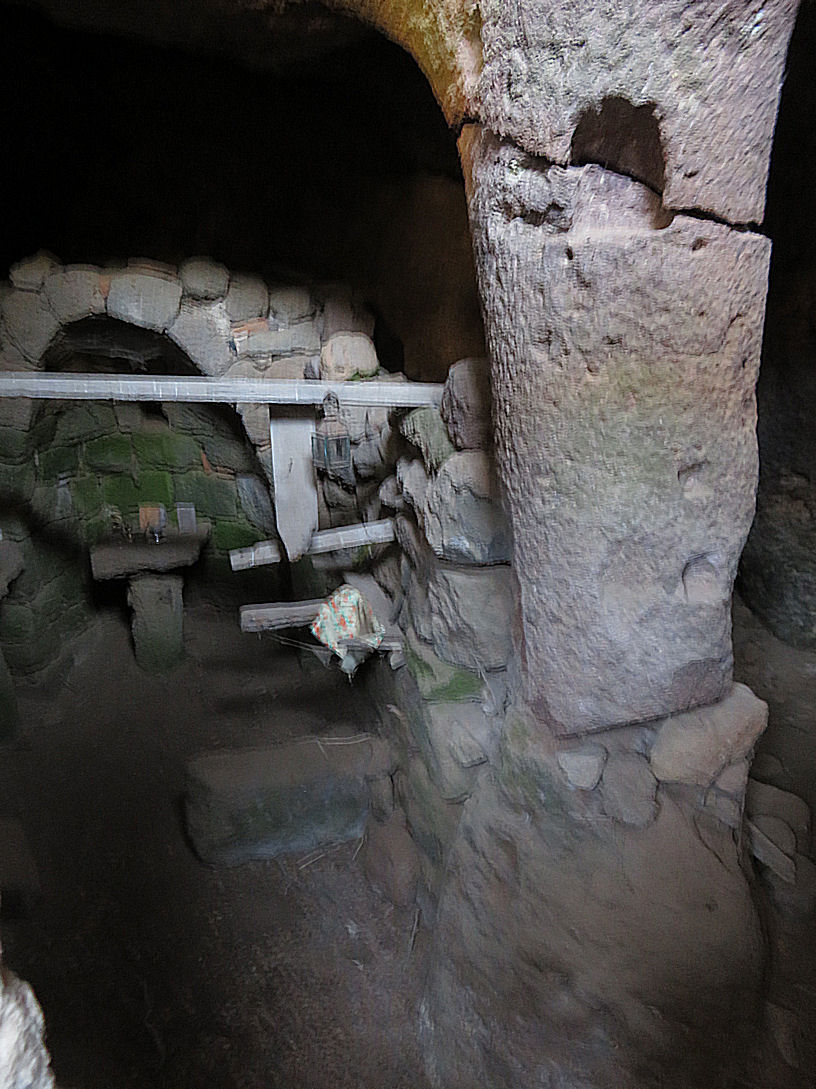

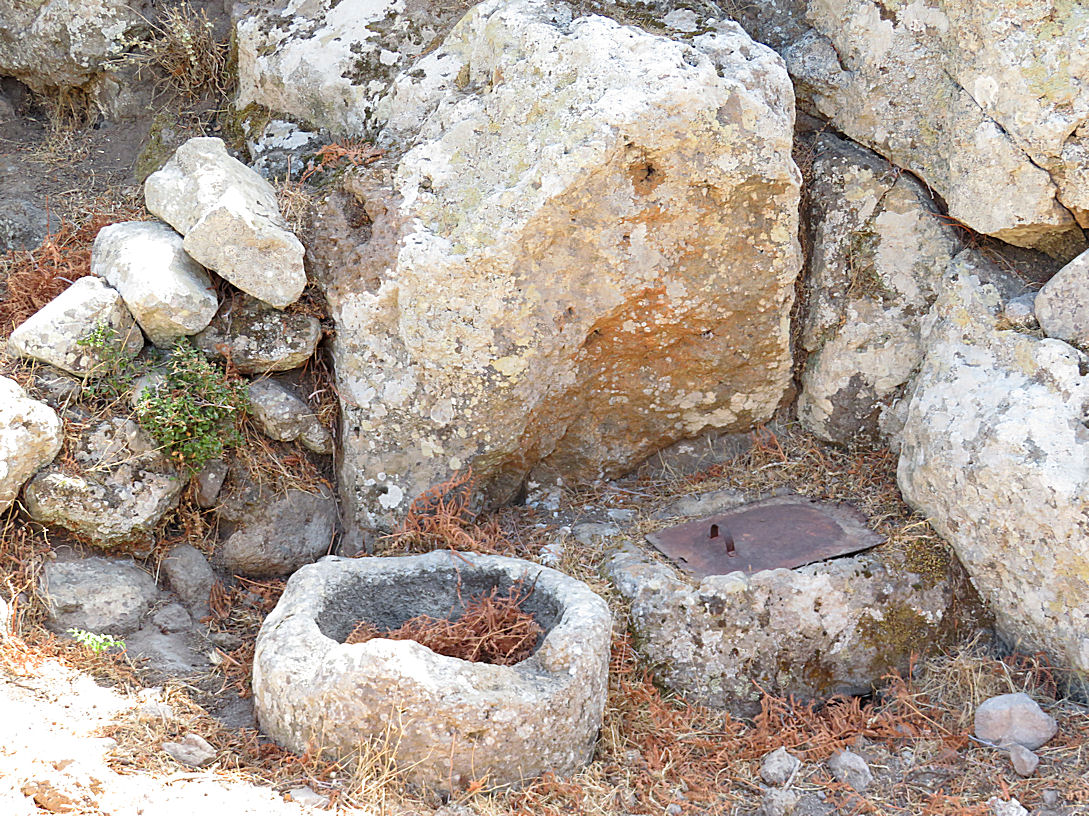
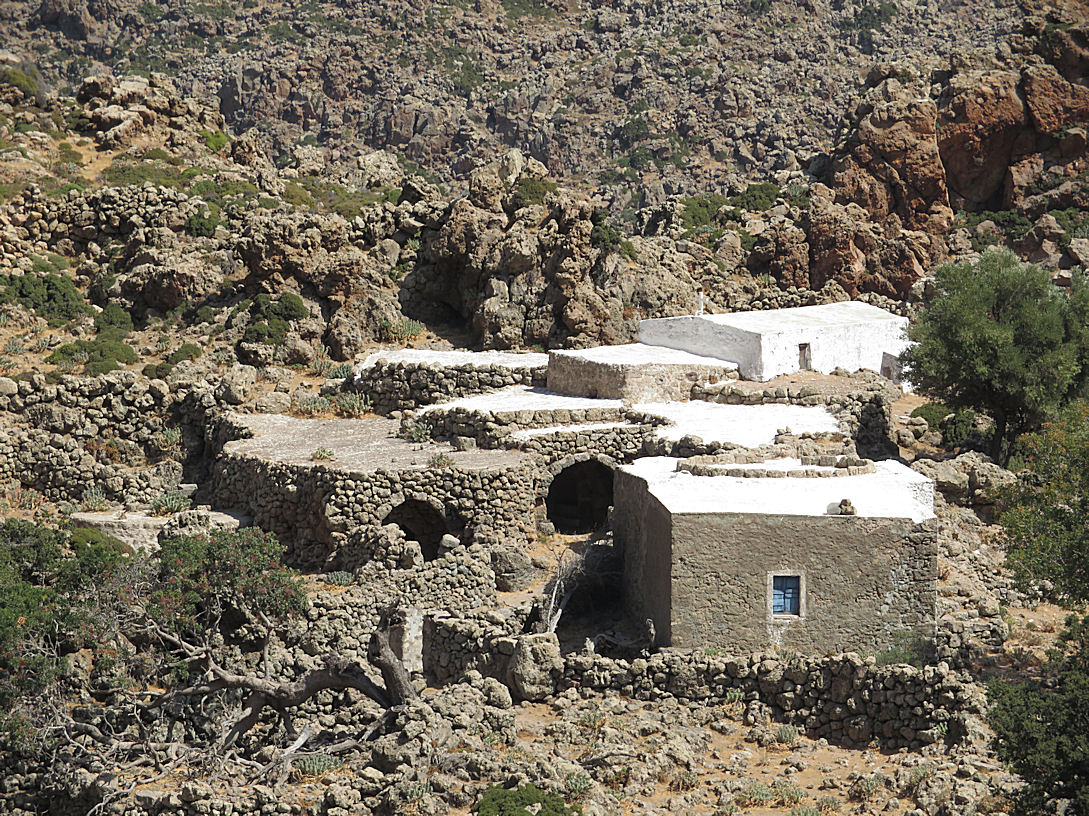
At the far end of the now inactive Nifios caldera, looking straight down into the craters in the main caldera, is a rock where I perch with my camera, hoping the whole thing will blow and I’ll get the Ultimate Shot. Never mind that no-one will see it.


A challenge every time is Oros Diavatis, highest mountain on the island topped by the chapel of Profitis Ilias. It can be climbed by taking a hire-car or scooter to Evangelistria which cuts the climb by half, but to climb it properly should be from sea-level at Mandraki. This time, having reached the top, the challenge was to avoid being blown off by the significantly stronger than usual wind. It was the first time I have been cold on the top of a Greek mountain in summer. Very satisfying trek. Challenge overcome. I think I earned my post-walk pint.


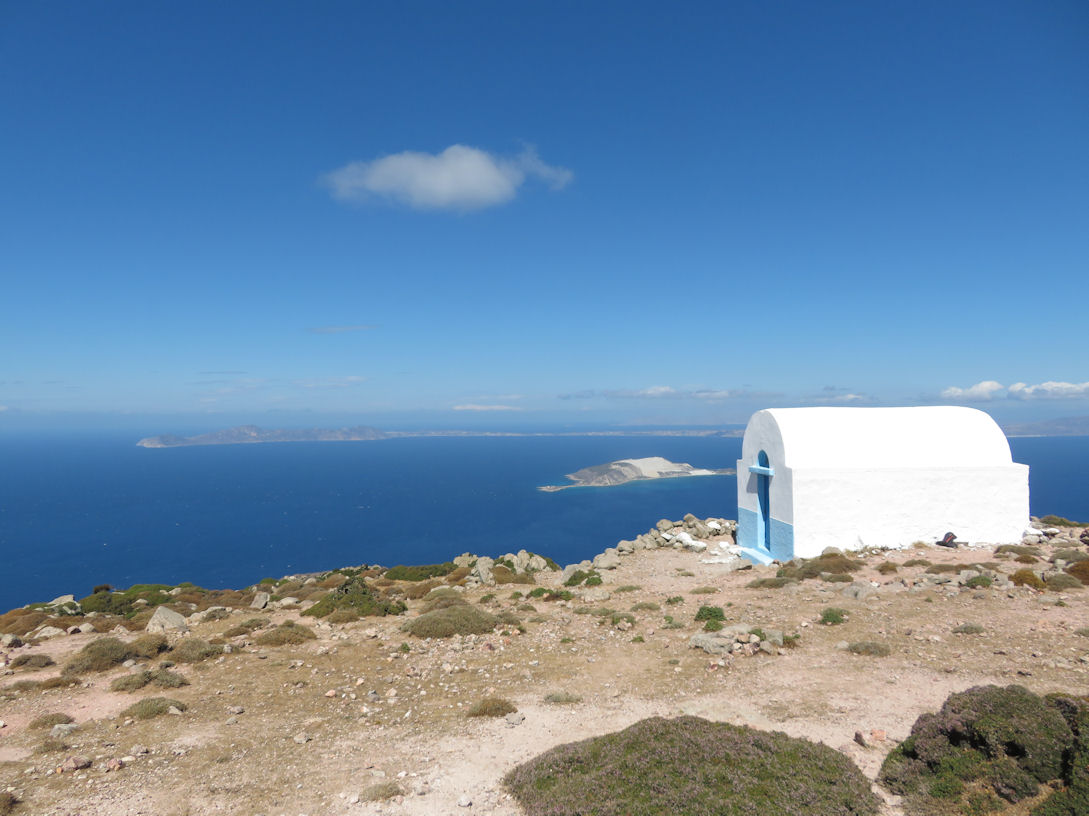
Perhaps one of the simplest but greatest pleasures at the end of September on Nisyros is seeing the Sea Daffodils. Coming to an end but still in evidence. Then returning to Symi in time for the emergence of the Autumn Crocuses and the prospect of the tiny, shy, Biarums. Fabulous.





x
